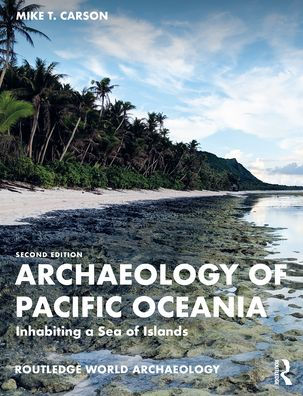The Pacific Ocean covers 165 million sq. km, nearly one-third of the world’s total surface area, yet its thousands of islands and their diverse cultural histories are scarcely known to the other two-thirds of the world. This book asks how and why did this vast sea of islands come to be inhabited over the last several millennia, transcending significant change in ecology, demography, and society? What were the roles of overseas contacts in the development of social networks, economic trade, and population dynamics? What can any or all of the thousands of islands offer as ideal model systems for comprehending globally significant issues of human-environment relations and coping with changing circumstances of natural and cultural history? What do the island archaeology records reveal about coastal setting as part of the larger human experience? How does Pacific Oceanic archaeology relate with a larger Asia-Pacific context or with the scope of world archaeology? The new second edition of Archaeology of Pacific Oceania addresses these questions and more, providing an updated synthesis of this important region.
Archaeology of Pacific Oceania is for scholars of Asia-Pacific archaeology and anthropology and will support students investigating the archaeology of Pacific Oceania.
The Pacific Ocean covers 165 million sq. km, nearly one-third of the world’s total surface area, yet its thousands of islands and their diverse cultural histories are scarcely known to the other two-thirds of the world. This book asks how and why did this vast sea of islands come to be inhabited over the last several millennia, transcending significant change in ecology, demography, and society? What were the roles of overseas contacts in the development of social networks, economic trade, and population dynamics? What can any or all of the thousands of islands offer as ideal model systems for comprehending globally significant issues of human-environment relations and coping with changing circumstances of natural and cultural history? What do the island archaeology records reveal about coastal setting as part of the larger human experience? How does Pacific Oceanic archaeology relate with a larger Asia-Pacific context or with the scope of world archaeology? The new second edition of Archaeology of Pacific Oceania addresses these questions and more, providing an updated synthesis of this important region.
Archaeology of Pacific Oceania is for scholars of Asia-Pacific archaeology and anthropology and will support students investigating the archaeology of Pacific Oceania.

Archaeology of Pacific Oceania: Inhabiting a Sea of Islands
400
Archaeology of Pacific Oceania: Inhabiting a Sea of Islands
400Paperback(2nd ed.)

Product Details
| ISBN-13: | 9781032486376 |
|---|---|
| Publisher: | Taylor & Francis |
| Publication date: | 10/11/2023 |
| Series: | Routledge World Archaeology |
| Edition description: | 2nd ed. |
| Pages: | 400 |
| Product dimensions: | 7.44(w) x 9.69(h) x (d) |
